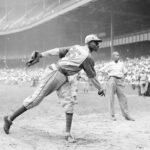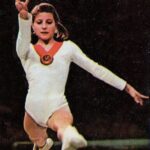Remembering Our American Heroes
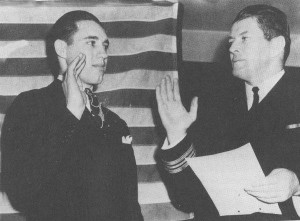
Bob Feller enlisted in the Navy the day after Pearl Harbor and missed nearly four full baseball seasons.
(Editor’s Note: In honor of Memorial Day Weekend, Sports Then and Now is re-running this article that reflects on the personal sacrifices made by some of the great stars of baseball. May we always remember and appreciate the sacrifices that so many have made to keep our country free.)
The names Ted Williams, Joe DiMaggio and Bob Feller conjure up images of greatness on the baseball diamond, but a lack of overwhelming career statistics often hurts these superstars when the discussion turns to the greatest players in baseball history. What is generally forgotten is that all three missed significant time in the prime of their careers while defending our country.
The role of top-level professional athletes in America was quite different in the 1940s. Not only didn’t the players make seven and eight figure salaries (most were happy if they got to five figures), but they also weren’t above serving our country during World War II.
Many of the top figures in the sports world gladly traded in the uniform of their team for the uniform of their country as no one was above doing their part to defend America’s freedom.
In 1941, Williams, DiMaggio and Feller were all at the peak of their careers with the sky seemingly the limit.
Williams and DiMaggio had captivated the baseball world in 1941 as DiMaggio hit in a record 56 games while Williams hit .406 (a mark that has not been duplicated in the last 68 years). Feller wasn’t too shabby himself as the fireball pitcher won a league best 25 games with 260 strikeouts.
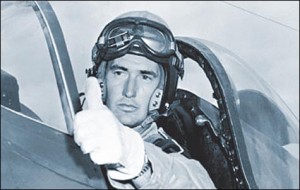
Ted Williams was a Marine pilot during World War II and the Korean War.
Little did they know that their lives–along with those of every other American–would soon be forever altered.
Following the Japanese attack of Pearl Harbor on December 7, 1941, it didn’t take Feller long to make a move.
On December 8, 1941 the 23-year old became the first professional baseball player to enlist in the military. He joined the Navy and immediately volunteered for combat duty.
For the next four years, instead of throwing fastballs for the Cleveland Indians, Feller was serving as a Gun Captain on the USS Alabama. He received five campaign ribbons and eight battle stars while rising to the rank of Chief Petty Officer.
Williams and DiMaggio stayed stateside in 1942 and continued their baseball careers.
Only in his fourth major league season, Williams claimed the American League Triple Crown as he led the league in batting average, home runs and RBI. However, it was DiMaggio and the Yankees who reached the World Series before losing to the St. Louis Cardinals in five games.
Originally, it looked like Williams might not serve active duty in World War II as he originally received a dependent deferral because he was the sole support for his mother. However, after receiving negative publicity and being dropped as a spokesperson by Quaker Oats, Williams enlisted in the Navy in May 1942.
Instead of accepting an easy assignment that would have allowed him to play baseball for the Navy, Williams joined the V-5 program to become a Navy aviator. He spent two years in intense training and received his wings and commission in the Marine Corps on May 2, 1944.
He spent time as a flight instructor at the Naval Air Station in Pensacola, Florida and when the war ended he was in Hawaii awaiting orders to join the Pacific fleet.
Williams also spent two years on active duty during the Korean War where he flew 39 combat missions. Toward the end of his tenure, Williams served as the wingman for a young pilot named John Glenn.
Overall, Williams missed five seasons of baseball due to his military service.
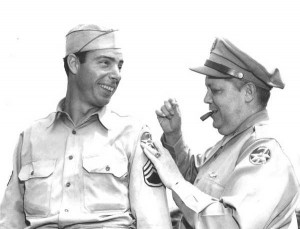
Joe DiMaggio enlisted in the Army in 1943 and missed three full baseball seasons.
DiMaggio enlisted in the United States Army in February 1943. He reached the rank of Sergeant and was stationed in California, Hawaii and New Jersey as a physical education instructor. He was discharged following the end of the war in September 1945.
Even after being away from the game for so long, all three immediately returned to greatness in 1946.
Feller actually got a jump-start as he returned to the game late in the 1945 season and went 5-3 in nine starts. In 1946 the 27-year old went 26-15 with a career-best 2.18 ERA and a then-record 348 strikeouts.
The 27-year old Williams also showed little signs of rust as he won the MVP award for the first time in his career and led the Red Sox to the World Series. In 1947, he won his second triple crown.
Of the three, the 31-year old DiMaggio had the toughest time returning to top form. He hit a career low .290 (the first time in his eight seasons in the league in which he hit under .300) with 25 home runs and 95 RBI. The following season he edged out Williams for the MVP award and in 1948 led the league with 39 home runs and 155 RBI.
While all three completed their careers with excellent career statistics and easily earned spots in the Hall of Fame, they each fell short of achieving at least one career milestone that is generally reserved for the best of all-time.
It is interesting now, nearly 65 years after the end of WWII, to sit back and wonder just what kind of amazing statistics the three superstars would have registered for their careers had they not been interrupted for such an extensive period of time.
To try and determine just what their career totals might have looked like had each of the three greats not missed so much time during their prime, I looked at their performance in the three years prior to their absence and the three years following their return to come up with annual averages. Certainly there is no way to know how injuries or other factors could have altered the totals, but these averages provide a window into just what might have been.
DiMaggio finished his 13-year career with a .325 batting average, 2,214 hits, 361 home runs and 1,537 RBI. His average totals for the three years before and after his absence was a .323 batting average with 177 hits, 28 home runs and 120 RBI.
If those totals are multiplied by the three years he missed and then added to his career numbers, he would have finished his career with a .324 career average, 2,745 hits, 445 home runs and 1,897 RBI. Those numbers would have vaulted him from 162nd to 48th all-time in hits; from 69th to 35th in home runs; and from 44th to 11th in runs batted in.
Many still consider Williams the best pure hitter in baseball history, but had he played those five prime years that he lost to military service his overall totals would have squelched any doubt about who was the best hitter of all-time.
Williams finished his career with a .344 average, 2,654 hits, 521 home runs and 1,839 RBI. Because he missed time during two different periods of his career, I compiled the numbers for the six years before and after the time he missed from 1942-1945 and then did the same thing for the six years around his absence in 1952 and 1953. Because Williams did play briefly during the 1952 and 1953 seasons, I did include those numbers when figuring his projected numbers for those years.
If the totals for the five seasons he missed were added to his ledger, Williams would have hit .342 with 3,452 hits, 663 home runs and 2,380 RBI. Those numbers would have lifted him from 69th to sixth in career hits; from 18th to fourth in home runs; and from 13th to first in runs batter in.
It is a little less scientific to assume the same statistical consistency for a pitcher because you don’t know if his arm would have been able to withstand the physical stress that four additional years would have provided. However, for the sake of argument I used the same formula to determine what Feller’s numbers might have looked like.
In 18 seasons, Feller posted a record of 266-162 with a 3.25 ERA and 2,581 strikeouts. Using his three seasons immediately before and after his absence as the guide, he would have averaged a 24-12 record with a 2.82 ERA and 246 strikeouts per season during the four full seasons between 1942 and 1945.
I took into account the numbers he did post in nine starts at the end of the 1945 season when compiling his projected career totals.
When adding the additional seasons, Feller would have posted a 362-210 record with a 3.11 ERA and 3,565 strikeouts. Those numbers would move him from 36th all-time in wins to fifth and from 26th in strikeouts to eighth.
Many other baseball players, including Hall of Famer Hank Greenberg, also missed significant playing time due to the war. In addition, two major leaguers and an estimated 125 minor league baseball players made the ultimate sacrifice during World War II.
As time goes by and the number of people who had the privilege of watching Williams, DiMaggio and Feller play in person declines, these three all-time greats will likely continue to fall further and further off the radar when determining the best of all-time. However, it is clear to see that they were indeed among the best players ever to wear a uniform and the sacrifice they made in putting country over personal glory should never be forgotten.
